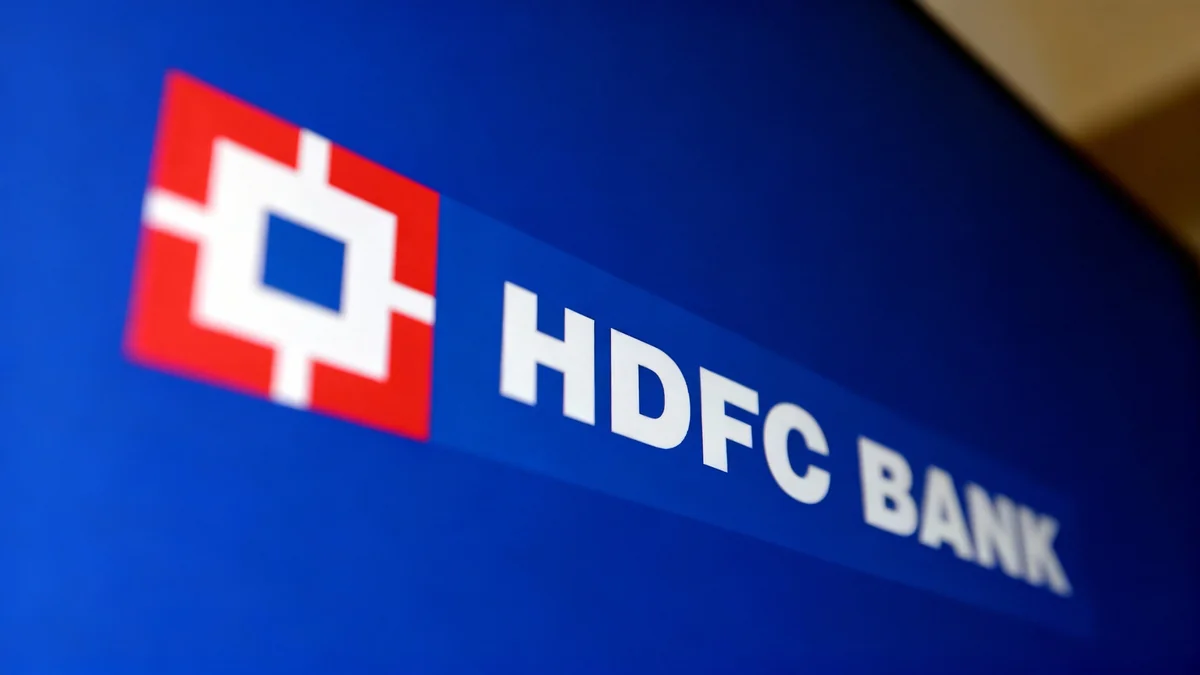HDFC Bank, India's largest private lender, announced a second-quarter net profit of 186.4 billion rupees ($2.12 billion), surpassing market expectations. The result was driven by consistent loan growth and a significant increase in trading income, though the bank faced continued pressure on its lending margins.
For the three-month period ending in September, the bank's profit grew from 168.21 billion rupees recorded in the same quarter last year. However, its net interest margin, a key indicator of profitability, tightened, signaling challenges in the lending environment.
Key Takeaways
- Profit Surpasses Forecasts: HDFC Bank's net profit of 186.4 billion rupees exceeded the 177.18 billion rupees projected by analysts.
- Margin Contraction: The net interest margin (NIM) decreased to 3.27% from 3.35% in the prior quarter, indicating lower profitability from core lending activities.
- Strong Balance Sheet Growth: Total loans increased by 9.9% year-over-year, while deposits grew by a more substantial 12%.
- Improved Asset Quality: The gross non-performing asset (NPA) ratio improved, falling to 1.24% from 1.4% three months earlier.
Detailed Financial Performance
HDFC Bank's financial results for the second quarter presented a mixed but ultimately positive picture. While the headline profit figure was strong, a closer look at the numbers reveals underlying pressures that the bank is navigating.
The bank's net interest income (NII), the difference between interest earned on loans and interest paid on deposits, saw a modest increase of 4.8%, reaching 315.5 billion rupees. This muted growth reflects the tightening margins.
The Margin Squeeze
The decline in the net interest margin to 3.27% is a central point of concern for investors. This metric shows how effectively the bank is generating profit from its loan portfolio. The compression suggests that the interest rates on its deposits are rising faster than the rates it can charge for loans.
During a conference call, Srinivasan Vaidyanathan, the Chief Financial Officer of HDFC Bank, addressed the issue. He explained that he expects margins to recover in the coming quarters. According to Vaidyanathan, this improvement will occur as deposits are repriced at current market rates, allowing the bank's earnings from its loan book to catch up.
Quarterly Financials at a Glance
- Net Profit: 186.4 billion rupees
- Net Interest Income (NII): 315.5 billion rupees
- Net Interest Margin (NIM): 3.27%
- Loan Growth (YoY): 9.9%
- Deposit Growth (YoY): 12%
Drivers of Growth and Profitability
Despite the margin pressure, HDFC Bank managed to outperform profit expectations through other revenue streams and solid business growth. One of the most significant contributors was income from trading activities.
The bank reported a net trading and mark-to-market gain of 23.9 billion rupees for the quarter. This is a substantial increase compared to the 2.9 billion rupees recorded in the same period last year, providing a significant boost to the bottom line.
Loan and Deposit Expansion
The bank's loan portfolio expanded by 9.9% compared to the previous year. This growth was primarily fueled by increased lending to small and mid-sized businesses, a segment showing renewed demand for credit.
On the other side of the balance sheet, deposits grew by 12% year-over-year. Building a strong deposit base has been a strategic priority for HDFC Bank, particularly since its merger with parent company HDFC two years ago. Strong deposit growth is crucial for funding loan expansion.
Broader Economic Context
Indian financial institutions have observed a gradual recovery in credit demand in recent months following a period of slower growth. Many analysts anticipate that this demand will become more robust in the second half of the fiscal year, partly due to the economic stimulus provided by recent tax cuts.
Asset Quality and Future Outlook
A key positive from the report was the improvement in HDFC Bank's asset quality. The gross non-performing asset (NPA) ratio, which measures the proportion of bad loans, declined to 1.24% at the end of September. This is a notable improvement from the 1.4% reported three months earlier.
Despite this improvement, the bank has taken a cautious approach by increasing its provisions for potential loan losses. It set aside 35 billion rupees for this purpose, a 29.6% increase from the previous year. This move was attributed to the creation of "floating provisions," a buffer that can be used to cover any future increase in stressed assets.
"Economic activity has visibly picked up following tax cuts...this is reflecting in the pick-up in the bank's loan growth in the September-ended quarter."
Looking Ahead
Sashidhar Jagdishan, the bank's Chief Executive Officer, expressed optimism about the future. He noted that the recent tax cuts have stimulated economic activity, which is directly contributing to the bank's loan growth.
Jagdishan stated that the bank aims to expand its loan book at a pace consistent with the overall Indian banking system for the current financial year. For the next financial year, he projects that HDFC Bank will grow its loan book at an even faster rate.
This forward-looking guidance, combined with improving asset quality, suggests confidence in navigating the current challenges of margin compression while capitalizing on a recovering economic environment.





